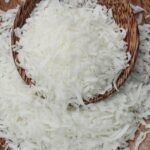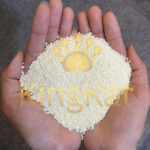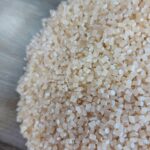CASHEW NUT SHELL OIL
In the world of food production and industrial applications, starch is a crucial ingredient. Among the various types of starch available, cassava starch, wheat starch, corn starch, and potato starch are some of the most commonly used. Each type of starch has its unique properties, advantages, and disadvantages. This blog will compare these four types of starch to help you understand their strengths and weaknesses.
Table of Contents
ToggleCassava Starch
Strengths:
- High Paste Clarity: Cassava starch produces a clear and bright paste, making it ideal for applications requiring transparent gels.
- Neutral Taste: It has a neutral flavor, which does not interfere with the taste of the final product.
- Gluten-Free: Cassava starch is naturally gluten-free, making it suitable for gluten-intolerant consumers.
- High Viscosity: It provides high viscosity and stability in food products, especially in soups, sauces, and bakery items.
Weaknesses:
- Low Protein Content: Cassava starch has low protein content, which might be a limitation in some nutritional applications.
- Limited Functional Properties: It has fewer functional properties compared to other starches, such as emulsifying or foaming capabilities.
Wheat Starch
Strengths:
- Good Binding Properties: Wheat starch has excellent binding properties, making it ideal for use in baking and pastry products.
- Texture Improvement: It improves the texture of foods, providing a tender and moist crumb in baked goods.
- Cost-Effective: Wheat starch is generally more affordable compared to other types of starch.
Weaknesses:
- Gluten Content: Wheat starch contains gluten, which is unsuitable for people with celiac disease or gluten intolerance.
- Cloudy Paste: It produces a cloudy paste, which may not be desirable in certain applications requiring clarity.
Corn Starch
Strengths:
- Versatile Thickening Agent: Corn starch is widely used as a thickening agent in soups, sauces, and gravies due to its excellent thickening properties.
- Stable Gel Formation: It forms a stable gel upon cooling, making it suitable for use in desserts like puddings and custards.
- Wide Availability: Corn starch is widely available and relatively inexpensive.
Weaknesses:
- Potential GMO Concerns: A significant portion of corn starch is derived from genetically modified corn, which might be a concern for some consumers.
- Moderate Clarity: The paste clarity is moderate, not as clear as cassava starch but better than wheat starch.
Potato Starch
Strengths:
- High Swelling Power: Potato starch has a high swelling power, making it effective in thickening applications.
- Excellent Moisture Retention: It retains moisture well, which is beneficial in baked goods to keep them fresh and soft.
- Superior Gel Transparency: Potato starch creates a highly transparent gel, suitable for products where clarity is important.
Weaknesses:
- High Cost: Potato starch is generally more expensive compared to other starches.
- Limited Availability: It might not be as readily available in some regions as corn or wheat starch.
Conclusion
Each type of starch—cassava, wheat, corn, and potato—offers unique benefits and drawbacks. Cassava starch is ideal for gluten-free and transparent applications, but it lacks protein and functional diversity. Wheat starch excels in binding and texture improvement but contains gluten and forms a cloudy paste. Corn starch is a versatile and affordable thickener, though it might involve GMO concerns and moderate clarity. Potato starch provides excellent swelling, moisture retention, and transparency, but it comes at a higher cost and may not be as widely available.
Choosing the right starch depends on your specific needs and applications. By understanding the strengths and weaknesses of each type, you can make informed decisions to enhance your products and meet consumer demands effectively.












